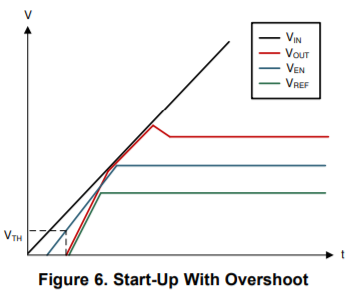Hello guys,
One of my customers is considering using LP2951 for their next products.
They knew LP2951 output voltage is overshooted when VIN is powered up on the following thread.
https://e2e.ti.com/support/power-management/f/196/t/819132
But the VIN rising time in the thread is very high speed.
In the customer case, the VIN rising time will be 500us ~ 5ms range.
Is the output overshoot happened at the rising time range?
Your reply would be much appreciated.
Best regards,
Kazuya.




